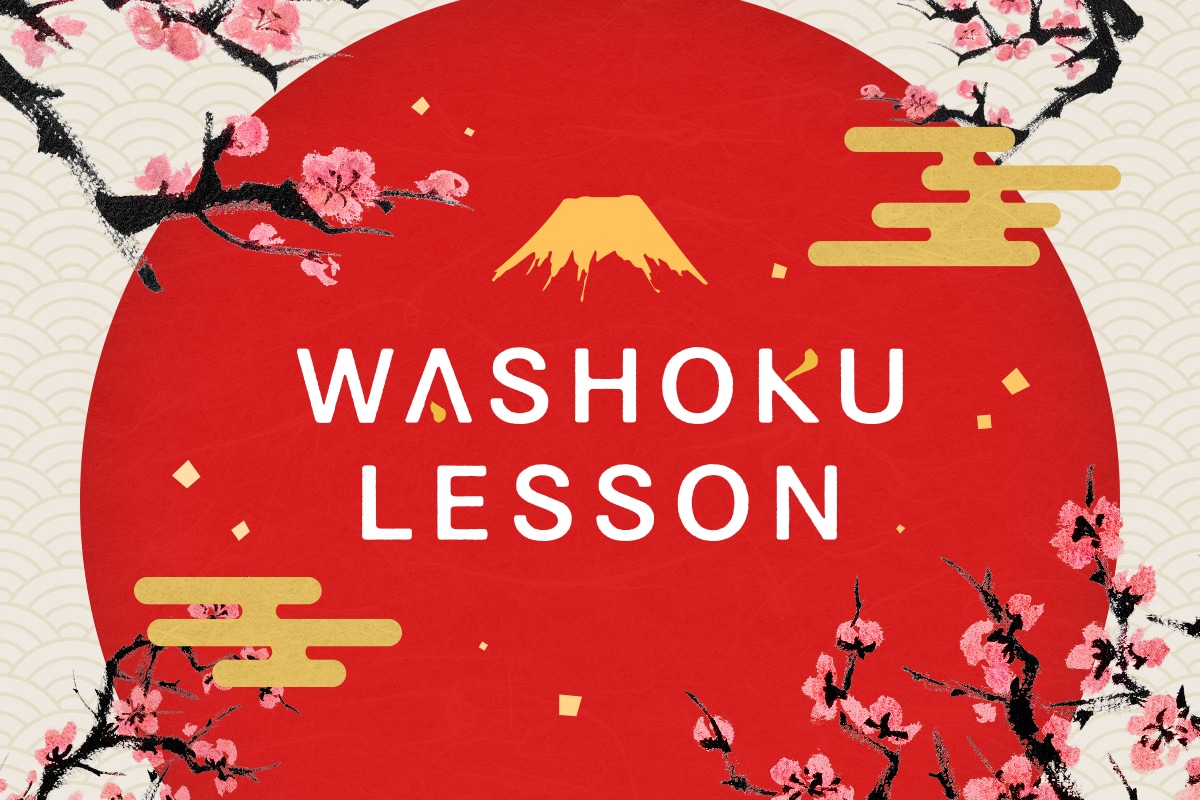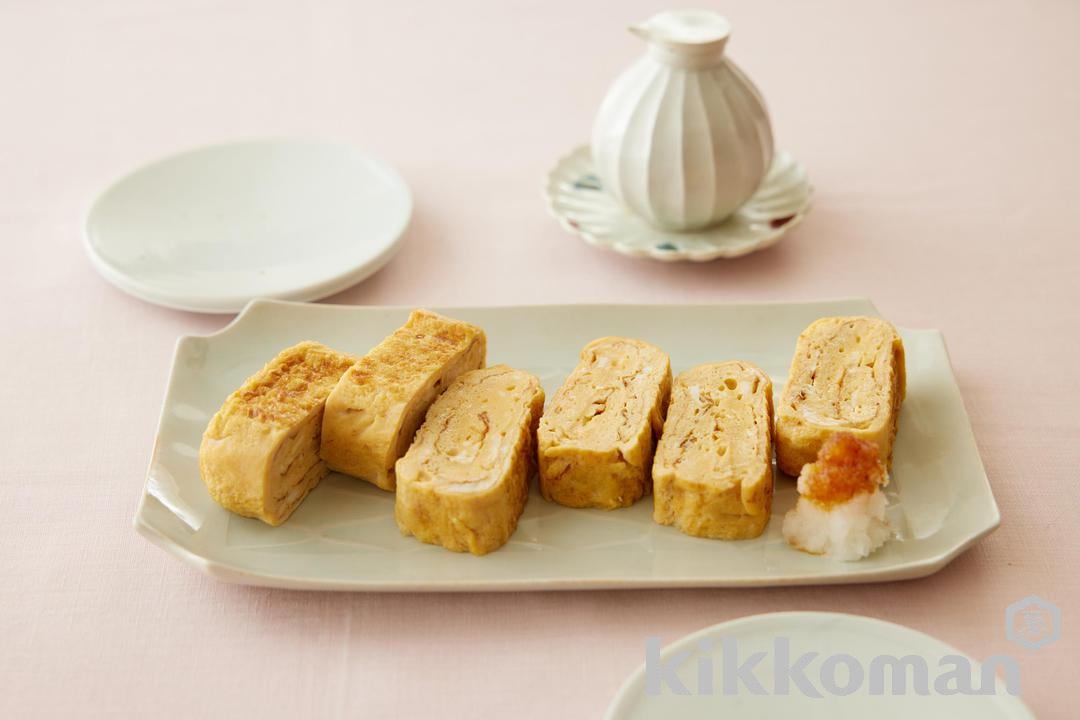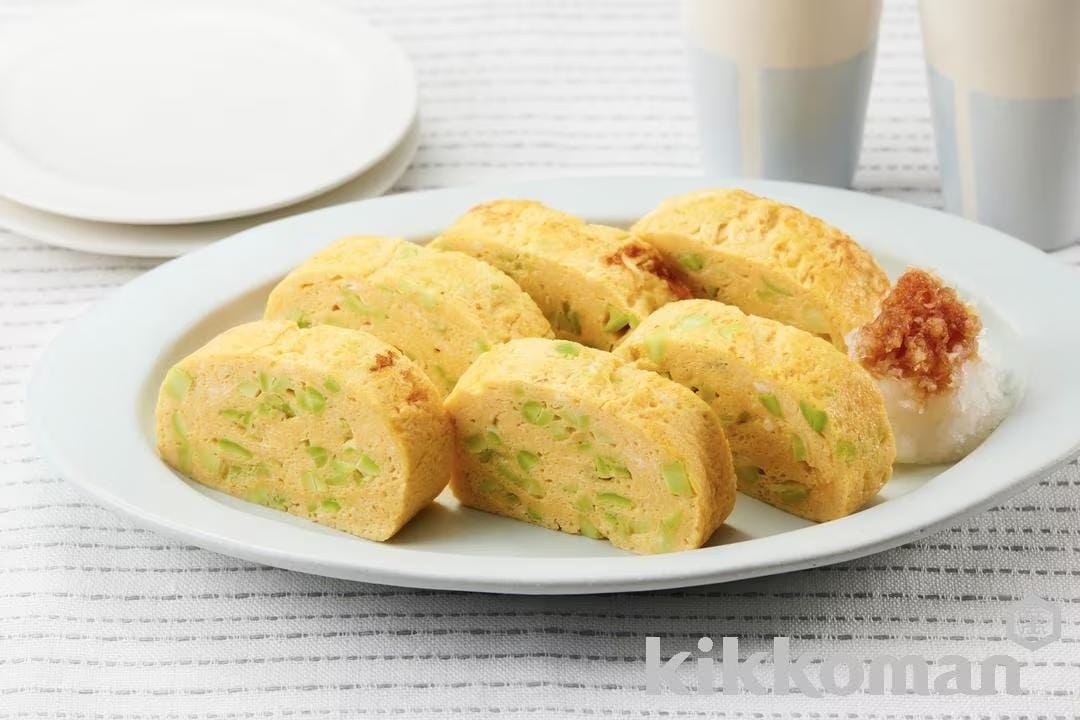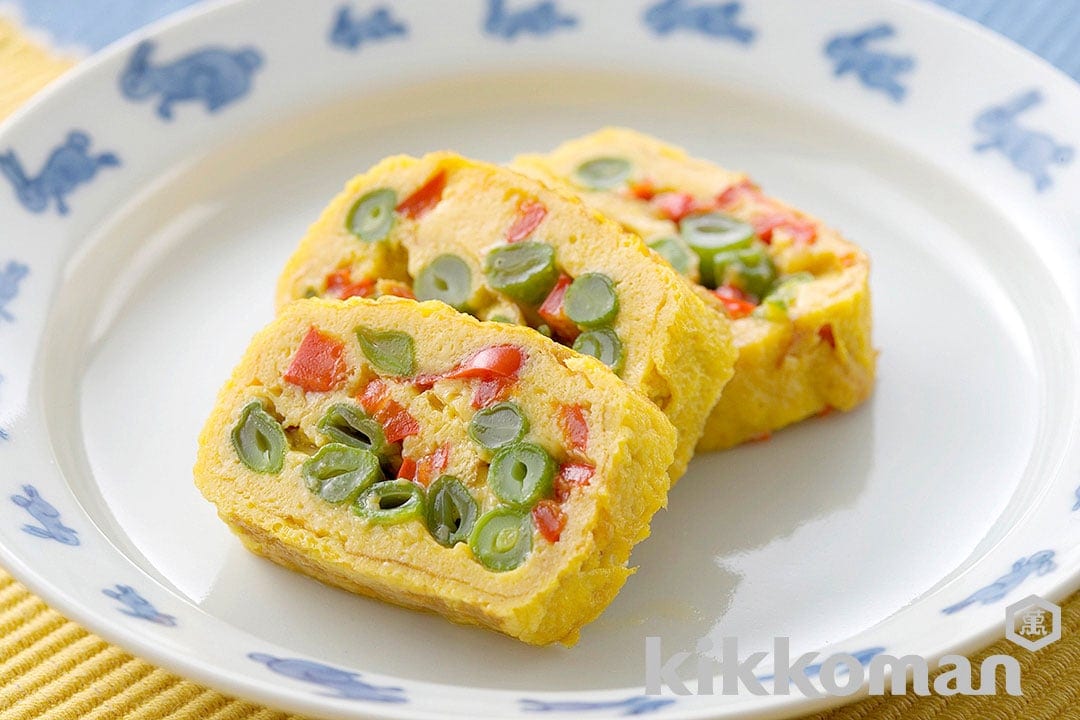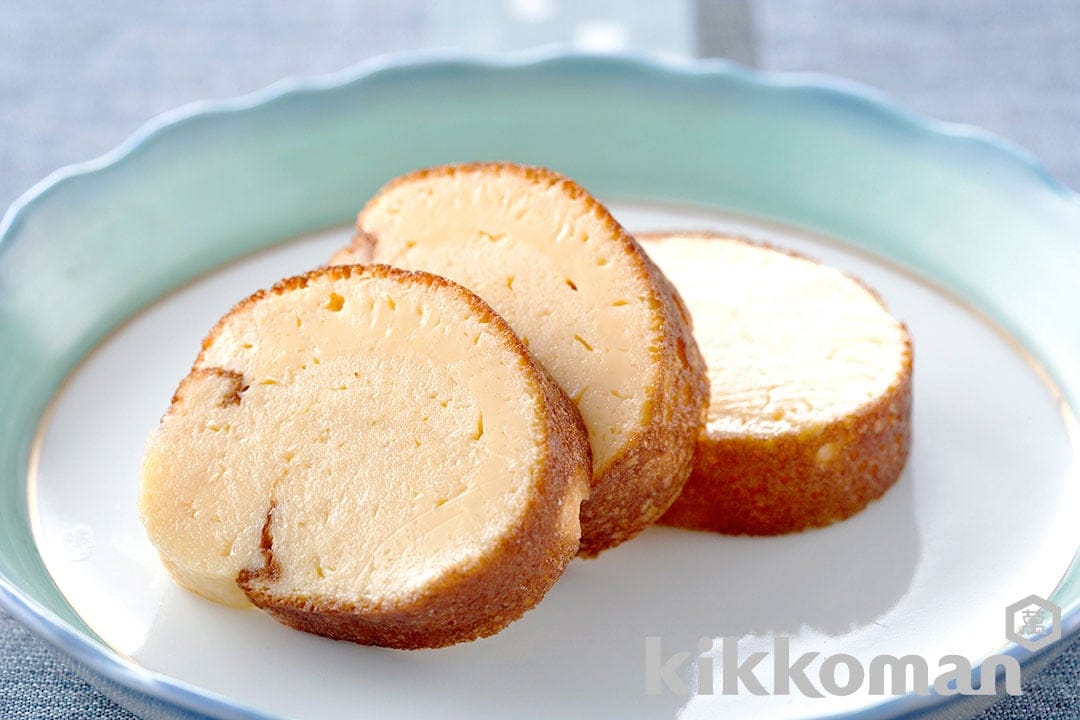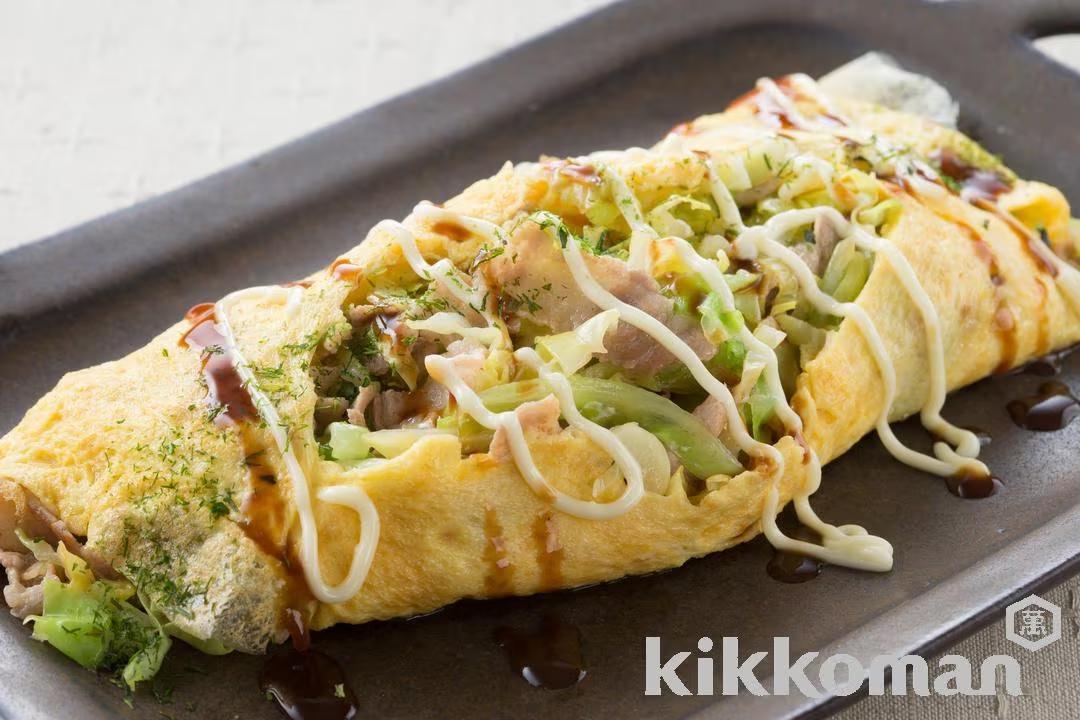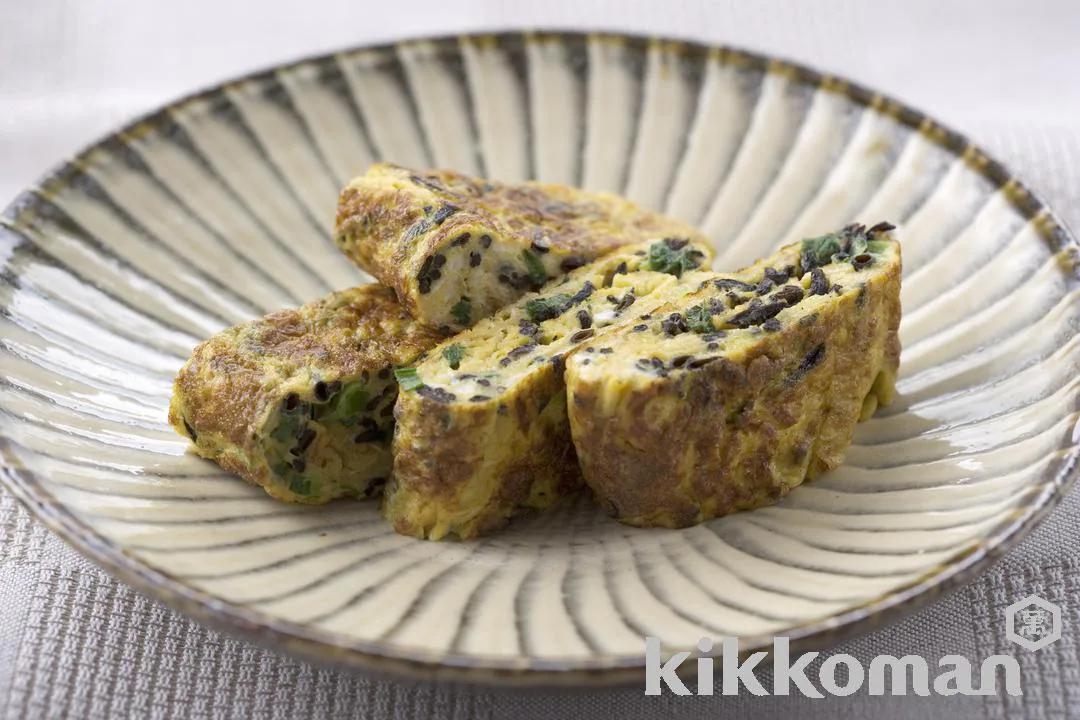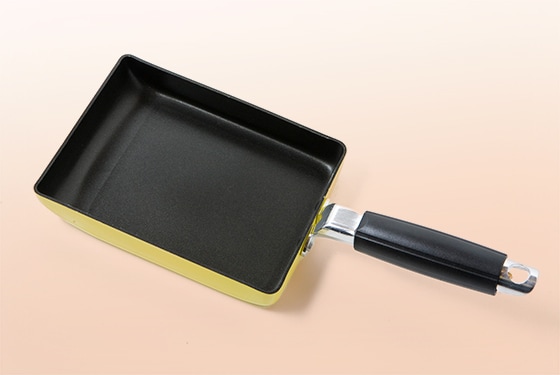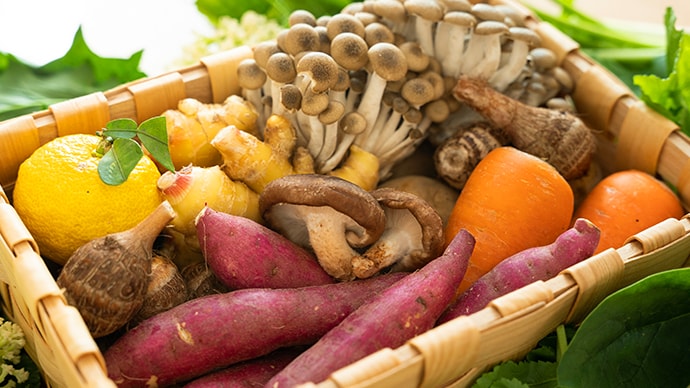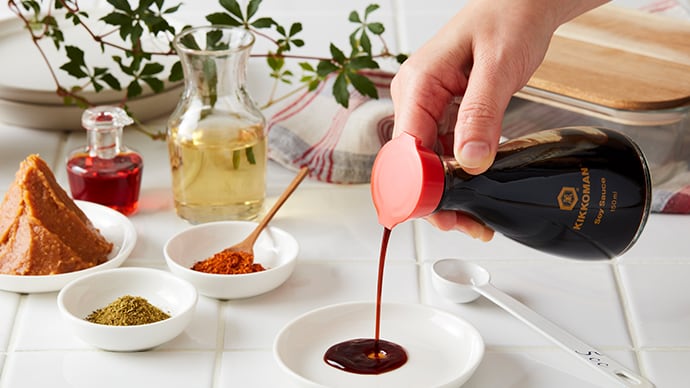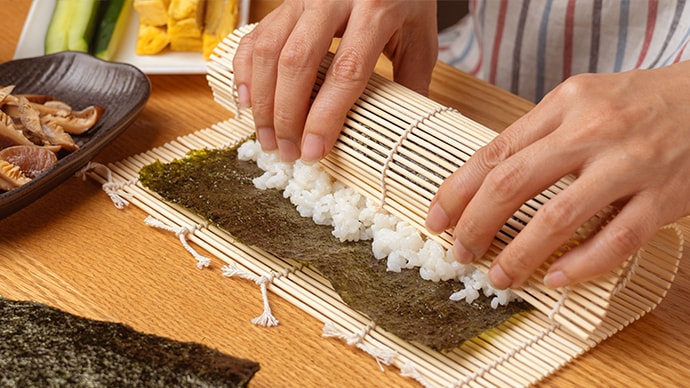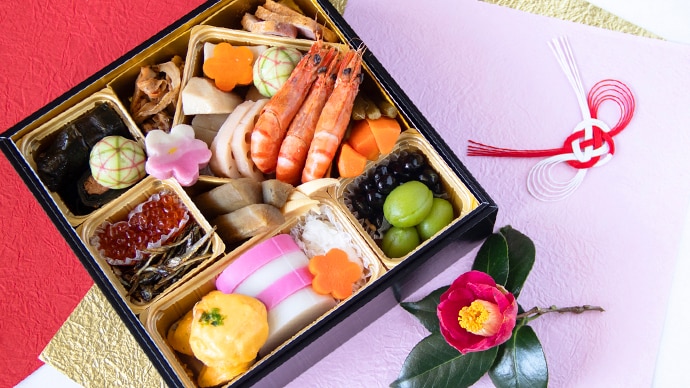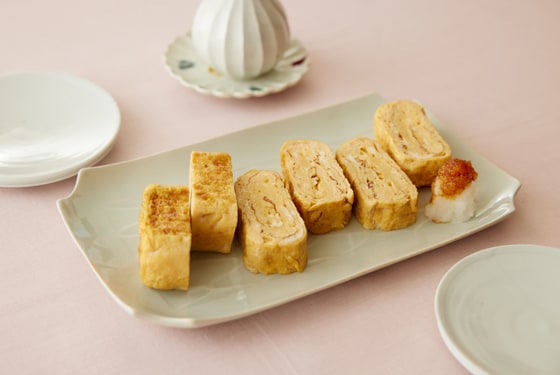
Japanese egg dish where an egg mixture made by beating and seasoning eggs is rolled up in multiple thin layers
What is tamagoyaki?
Tamagoyaki (卵焼き in Japanese) is a Japanese method of frying eggs where beaten and seasoned eggs are thinly fried and rolled repeatedly until the egg is the desired thickness. In the Kanto region (Eastern Japan), sugar is also added to sweeten the flavor and then grilled until very slightly brown. This style is called Atsuyaki Tamago and is the main variety in the region. On the other hand, in the Kansai region (Western Japan), the Dashimaki Tamago style is much more common. It is seasoned with dashi (Japanese broth), grilled without browning, then served with grated daikon radish as a topping. There is also a specialized kitchen utensil for cooking tamagoyaki, a Tamagoyaki pan, which has a different shape in the eastern and western parts of Japan—square and rectangular, respectively. Tamagoyaki is a popular dish in bento lunch boxes, and it is even used as an ingredient in Nigiri Sushi (hand-pressed sushi). Not only plain tamagoyaki, but also tamagoyaki with other ingredients inside such as mentaiko (spicy cod roe), cheese, and hijiki seaweed are also popular.
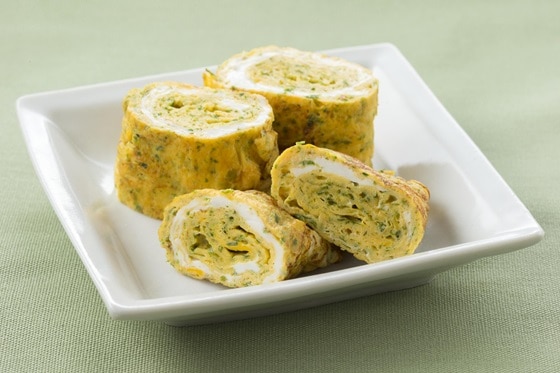
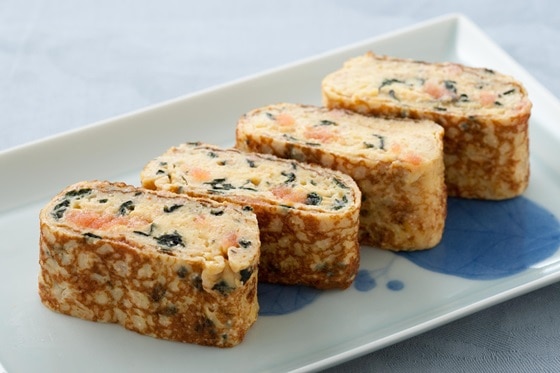
History
The origin of Tamagoyaki is said to be a dish made by pouring a beaten egg into boiling dashi broth and getting the egg coagulated and fluffy, which became popular as a feast for the commoners during the Edo period (1600-1868).
Occasions related to tamagoyaki
Datemaki is a type of Tamagoyaki made by adding fish paste into beaten egg, baking the egg mixture, and rolling it with a makisu (sushi mat). This is one of the standard dishes in Osechi Ryori (the Japanese New Year’s feast). In the Kansai region (Western Japan), Dashimaki Tamago can be replaced with Datemaki.
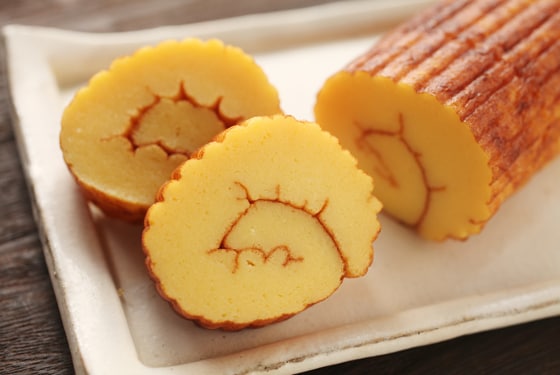
Washoku Lesson
Washoku Lesson is special content offering detailed and easy-to-understand explanations, including tips for making classic Japanese dishes as well as the many ways of enjoying these, and introductions to special Japanese cooking utensils and annual events .
Related Recipes
20min
367kcal
551mg
15min
126kcal
276mg


